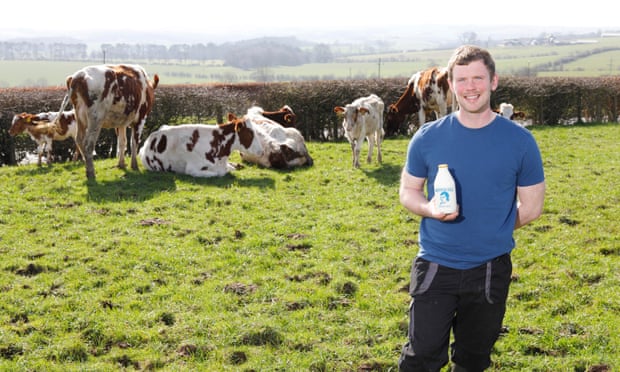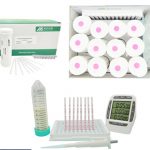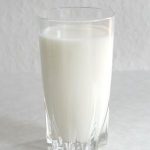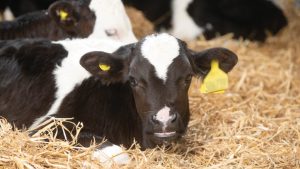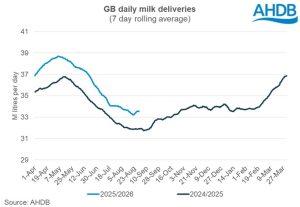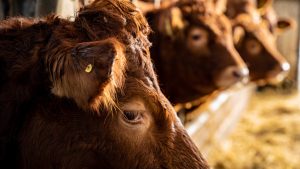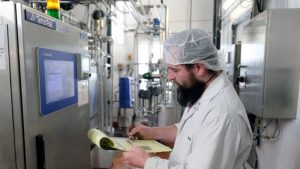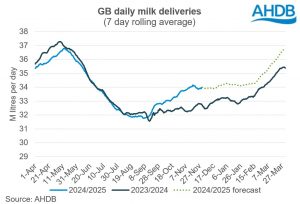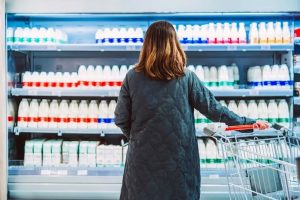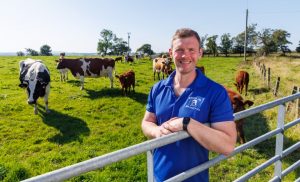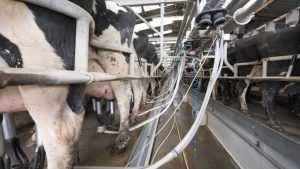
“When the milk price crashed five years ago, we were in a bad way,” says Bryce Cunningham, a third-generation farmer running Mossgiel farm in Ayrshire. “Fifty, sixty years ago, you could make a living on a dairy farm; now you’re expected to just survive. So I thought, ‘If we did it the way they did it before, could we survive?’”
The farm sits on the land that Robert Burns farmed in the 1700s. “Farming the land that he worked, could we recreate the milk that he drank?”
It’s a romantic concept, but Mossgiel farm is part of a wave of dairy farms witnessing a resurgence in demand for the unadulterated, glass-bottled milk of yesteryear, before standardised, plastic-bottled became the norm, and long before plant-based milks hit Instagram.
Commercial homogenisation (emulsifying the cream into the milk rather than letting it float naturally on top) began less than a century ago, but it didn’t dominate the market until relatively recently. Today, most milk consumed in the UK is pasteurised, homogenised as well as standardised – which is to say, processed to assure a consistent percentage of fat.
There are countless hotly contested theories professing the merits of raw, unpasteurised, unhomegenised milk. Pasteurisation heats milk to destroy potential pathogens but, say raw milk advocates, kills many vitamins and minerals which could be beneficial to health. The homogenisation process – emulsifying the milk to distribute fat molecules evenly so the cream does not rise to the top – also destroys beneficial nutrients.
Now, farms such as Mossgiel are opting to raise their cows organically, and not to homogenise their milk. For Cunningham, it’s this approach that brought his family farm out of crippling debt.
Geoff Bowles, who runs Ivy House farm in Somerset, which provides Harrods, Fortnum & Mason and Selfridges with their unhomogenised, organic milk, cites the high price of the equipment needed as one of the reasons he has never homogenised his milk but, aside from the purported health benefits, he also highlights its practical value.
“It will mask the early stages of souring,” he says. “Whereas with non-homogenised milk, the fat coagulates and floats to the top – that’s how you know it’s on its way out.”
Even supermarkets such as Waitrose have seen a rise in demand – in the past year it reported a 28% increase in searches for non-homogenised milk on its site and a 3% increase in sales of its Duchy Organic cow’s milk range, none of which is homogenised.
Raw milk – which comes straight from the cow: unpasteurised, non-homogenised and unaltered from udder to bottle – also continues to rise in popularity. Searches for raw milk on the Waitrose site have increased by 54% in the past year alone. The Raw Milk Producers Association reports that production in England, Wales and Northern Ireland has gone up by 600% since 2014. It is still illegal to sell raw milk in Scotland, but that doesn’t stop it getting in – numerous raw milk dairies from other parts of the UK ship into Scotland.
Environmentally friendly glass bottles are making a comeback too. “We started using glass bottles in May,” says Bowles. “Since then, we’ve seen a steady increase in sales, and now 15% of our milk goes out in glass bottles. It’s made a big difference.”
He’s not alone. Graham’s Family Dairy in Stirlingshire, Scotland’s largest independent dairy, has enjoyed a 25% increase in customer inquiries each week since it started using glass bottles in May this year.
Mossgiel moved all its packaging over to glass and reusable plastic in January. Last November it produced 8,000 to 9,000 litres a week for 251 customers; today that has risen to more than 15,000 litres for 379 customers. Cunningham thinks the packaging is responsible for this increase.
The environmental impact of plastic is likely impacting these figures, particular since awareness was raised by David Attenborough in his much-publicised criticism of its catastrophic effect on the world’s oceans in Blue Planet II last year. Vending machines have emerged where customers can fill up their own containers with non-homogenised, organic milk – Mossgiel supplies four in Scotland. Ivy House delivers its milk to coffee shops in churns.
With the re-emergence of independent milkmen, nostalgia may also be playing a part. The BBC reported that in the mid-1990s more than 2.5 billion litres of milk were delivered by milkmen each year. By 2004 that number had dropped to 637 million litres, and by 2016, barely 3% of milk consumed in the UK came by way of milkmen. In 2019, Cunningham supplies milk to six companies that home-deliver across Scotland. One such company, Milk & More, which was purchased by Müller in 2015, is reporting a 46% growth in online sales year on year.
Roger Kerr, chief executive of Organic Farmers and Growers and former managing director of the Calon Wen cooperative in Wales, thinks people are becoming more aware of their impact on the environment. “I think some of these changes are happening because of the plastic thing. People are wanting to do something: ‘What can I do, given I’m not going to stop flying to Ibiza, or driving my car?’The move to glass is part of that, as is the rise in doorstep delivery.”
In the age of Brexit and cultural uncertainty – like the nursery food that gained popularity during the 2008 recession – old-fashioned milk seems to have become part of Britain’s nostalgia safety-net. Except this time, there’s a positive result for the producers’ efforts: financial, not to mention environmental, gain.
